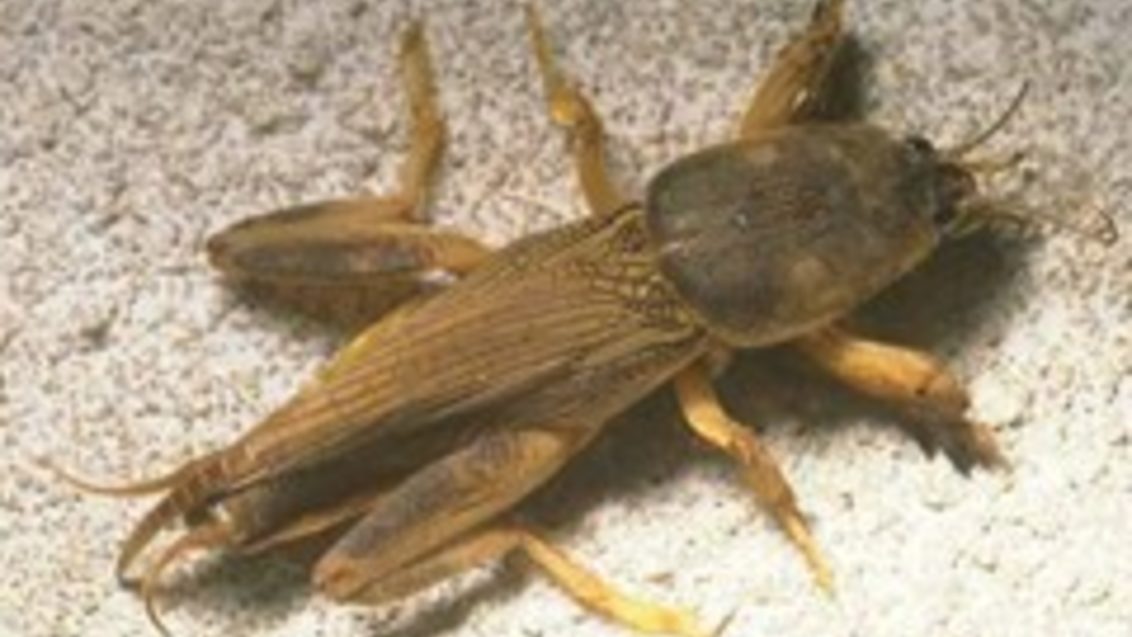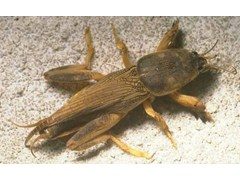Mole Cricket Control


It has been found that the neonicotinoid insecticides - imidacloprid, clothianidin, and thiamethoxam are quite effective at controlling the newly hatched nymphs and a single application at their maximum allowed rates can control the nymphs for the entire egg-laying and egghatch period.
The key is to apply these insecticides when the females are beginning to lay eggs. Well trained superintendents soap flush adult mole crickets in the spring where the male calling and spring mating activity is occurring. (Soap flushing is putting two to four tablespoons of household dish-washing detergent in two gallons of water. Spread the mix over an approximately one meter square area where mole cricket activity is intense. The mole crickets will surface over the next few minutes so that they can be picked up and put into the bucket). The captured females are cut open along the abdominal side and squeezed! The eggs will ooze out and if they are milky or white, they are not ready to be laid. However, as soon as they get a clear amber look, they will be laid within a few days and it is time to apply the neonicotinoid.
Combination products - imidacloprid plus bifenthrin or clothianidin plus bifenthrin - have often performed better during this time than the neonicotinoids applied alone. Fipronil represents a unique insecticide category and it has been the top performer in the United States for mole cricket control. It can be applied by slit-insertion of the granules which will provide season-long control of the mole crickets but this technique is very expensive because of the cost of the application equipment. It is also available as a surface-applied granule, but this technique has significantly reduced efficacy, especially against the larger nymphs and adults.
Some superintendents, in order to save money, are treating most of their fairways, irrigated roughs, and surrounds of their tees and greens with the two to three applications of a pyrethroid or a single application of the neonicotinoids when new nymphs appear. This usually eliminates about 80% of the problems. However, there will always be some hot spots that become apparent in mid season when the nymphs become large. At this time, fipronil granules can be spread over these infested areas to knock out the large nymphs that will develop into the adults that commonly dig into tees and greens. This is also a time that baits can be effective. To use baits most effectively, wait until after a good rain or irrigate heavily the day before the application to encourage the mole crickets to come to the surface to feed. Apply the bait in the afternoon and withhold irrigation for a day, if possible. Wet baits lose their attractiveness very quickly.
The other benefit of applying a neonicotinoid product followed by fipronil is that grub control and billbug control will also be achieved. Fipronil seems to have no affect on the white grub populations and limited affect on billbugs.
In lower maintenance areas, insect parasitic nematodes are often used to provide longer-lasting control of the mole crickets. Stinernema scapterisciand S. riobravae have been the two species that are most effective against mole crickets. These can often be ordered through internet sources and many companies are familiar with shipping overseas.
Personal contact is needed with the supplier to determine the best time to produce, ship and apply these nematodes. They are generally established best when the soil conditions are warm and moist, when the new mole cricket nymphs are active. These two nematodes often establish in mole cricket infested areas and will persist from season to season.
Unfortunately, they will not normally eliminate mole cricket damage and activity in more highly managed turf areas.
